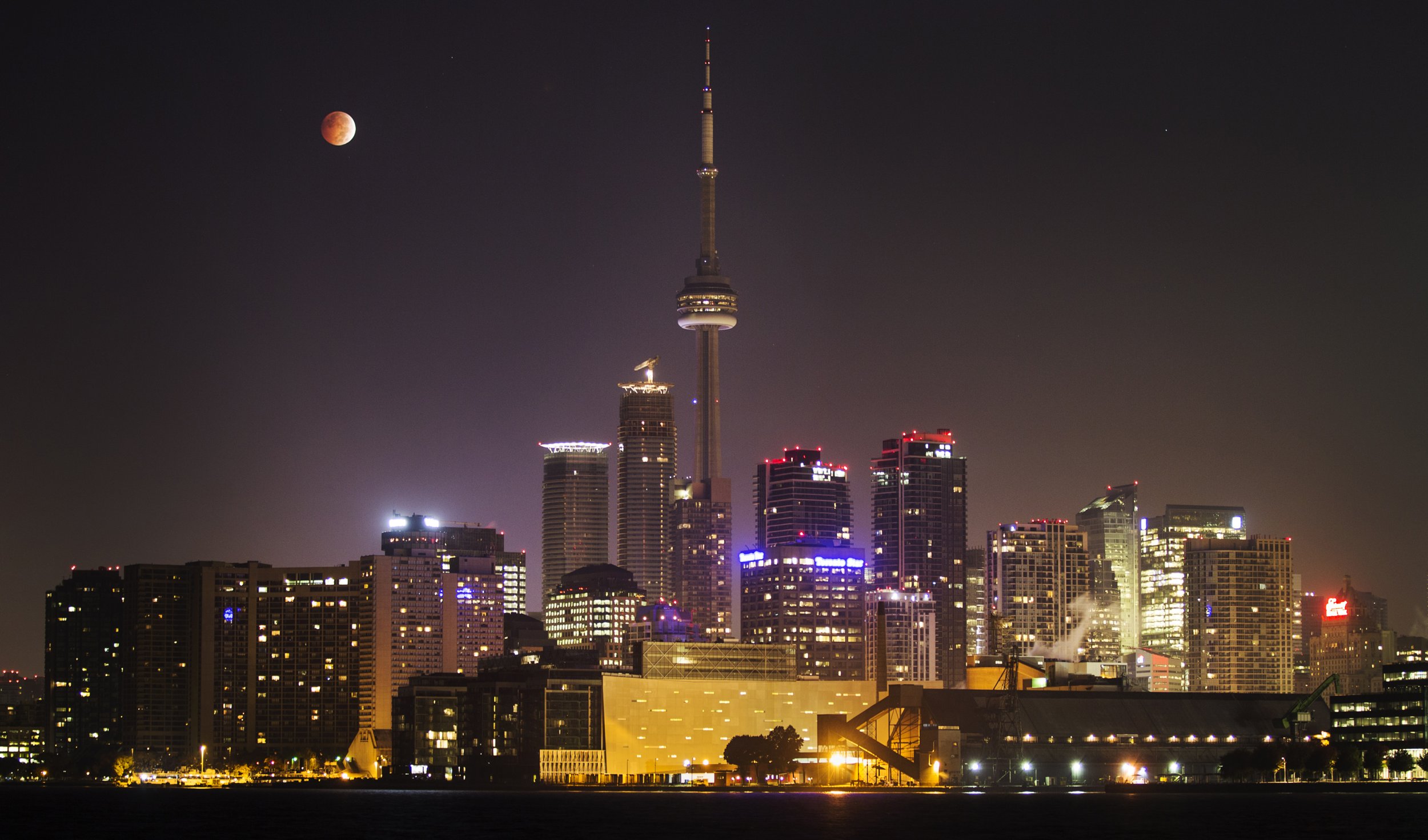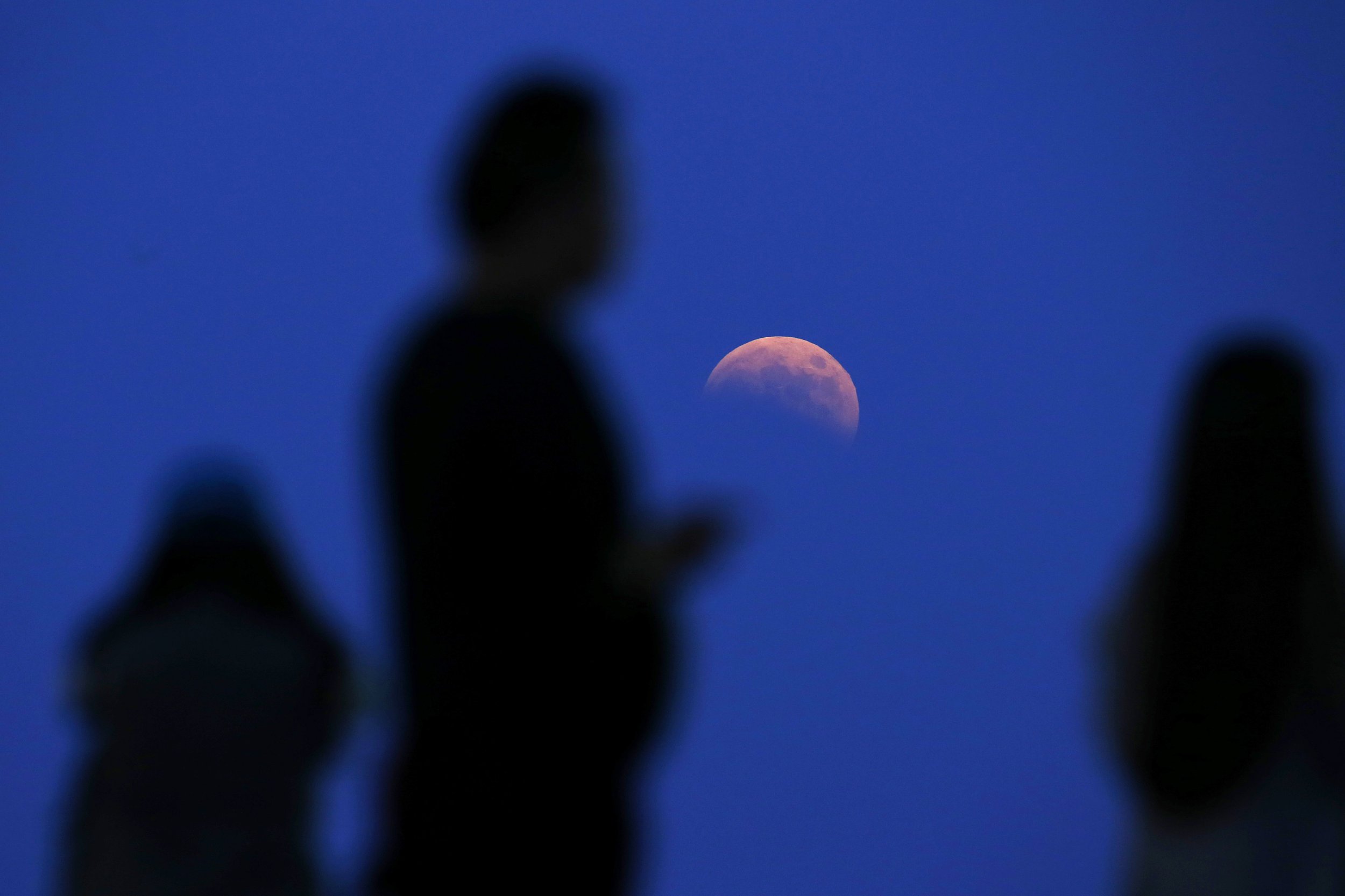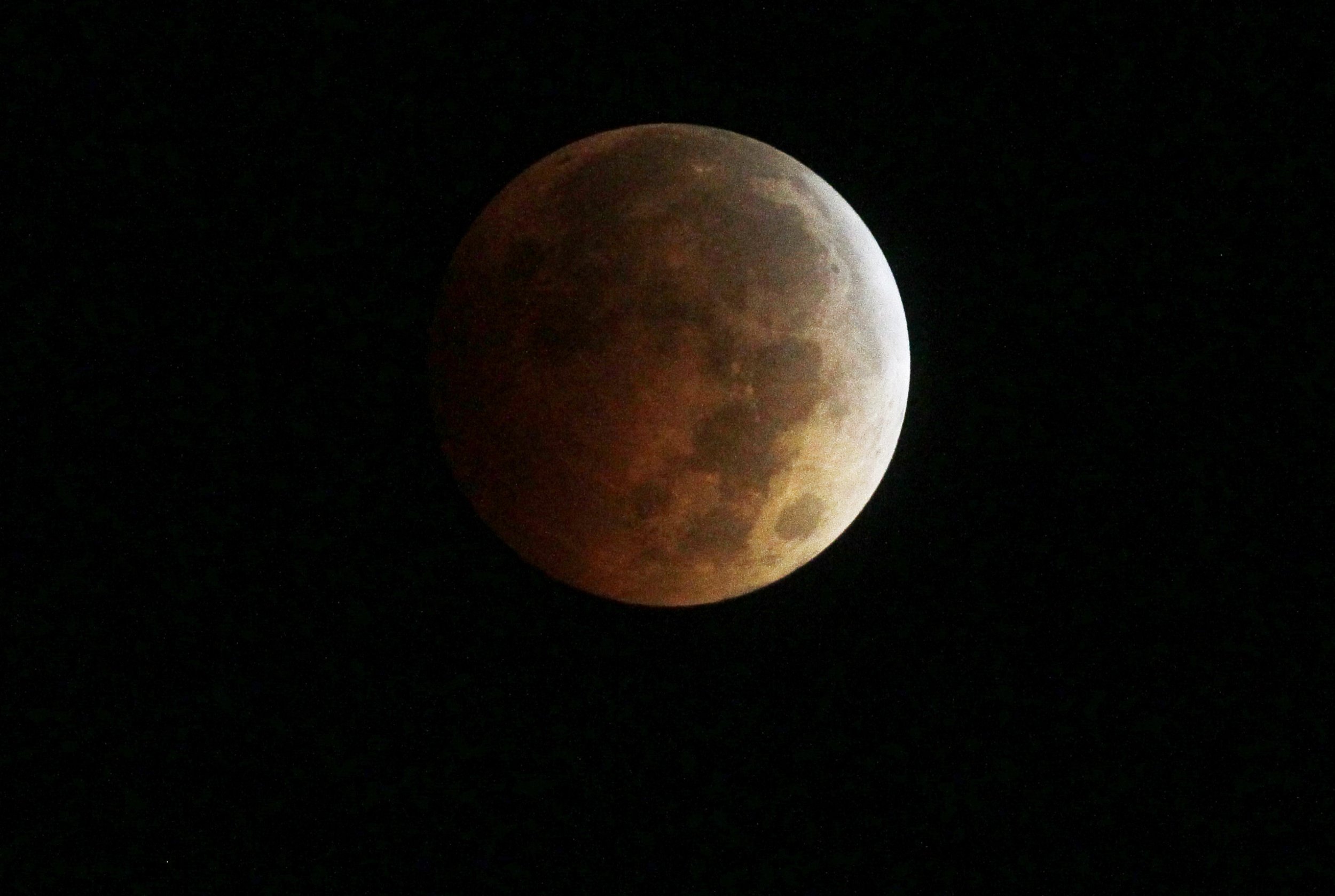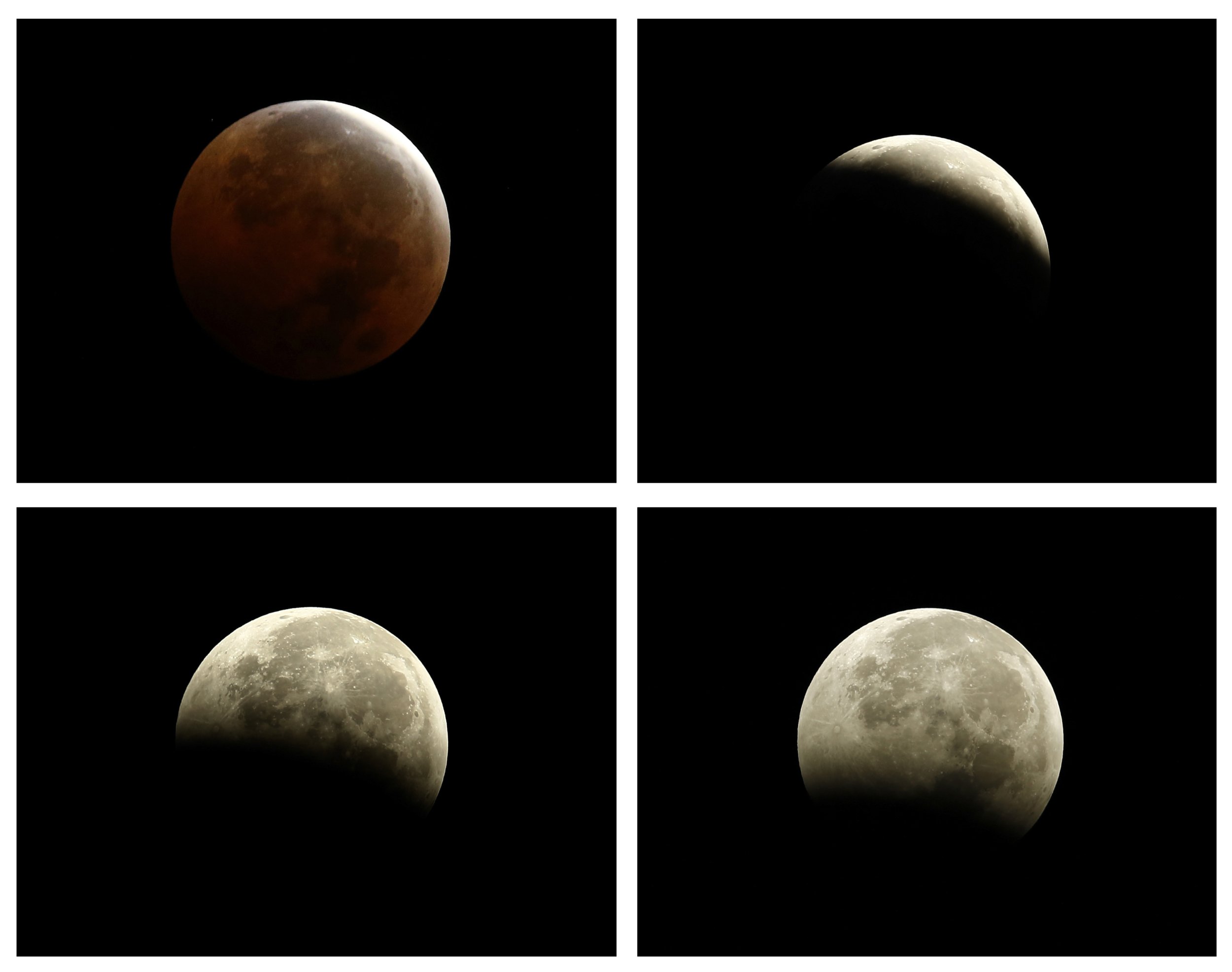Total Lunar Eclipse In Photos: When Can Fans Expect The Next Blood Moon?
The total lunar eclipse greeted early risers in North America and had others staying up late for the astronomical event Wednesday. North and South America, Australia and parts of Asia were treated to views of the "blood moon," the name given to the total lunar eclipse due to the copper or red hue of the moon.
Second shot from #LunarEclipse @nasa taken at SSO/Tzec Muan network - Tak E180/0.1s/ISO800 pic.twitter.com/peqy4V6xxC
— Nick Howes (@NickAstronomer) October 8, 2014A total lunar eclipse occurs when the moon passes through Earth's shadow, or umbra. The sun, Earth and moon are in alignment and the red color is due to the projection of the sun's light onto the moon. Wednesday's total lunar eclipse was the second of 2014, the first taking place on April 15, and is a part of a series of eclipses known as a lunar tetrad. There will be four total lunar eclipses, spaced out in six-month intervals. The next total lunar eclipse will take place on April 04, 2015.
There will be a partial solar eclipse, visible in North America and Canada, on Oct. 23, notes NASA. A solar eclipse occurs when the moon passes between the sun and the Earth, blocking the star's light from observers. In a partial solar eclipse, the moon blocks only a portion of the sun. "The shadow travels east, much of North America will be treated to a partial eclipse. The eclipse magnitude from cities like Vancouver (0.658), San Francisco (0.504), Denver (0.556) and Toronto (0.443) will surely attract the media's attention," Fred Espenak said. The next total solar eclipse will take place on March 20, 2015.
Meanwhile, we have another notable celestial event coming up later this month. While not quite as spectacular as August's Perseids or November's Leonids, the Orionid meteor shower could put on a show as it peaks on Oct. 21.
Photos of Wednesday's total lunar eclipse, and Slooh's blood moon broadcast, can be viewed below.





© Copyright IBTimes 2024. All rights reserved.






















